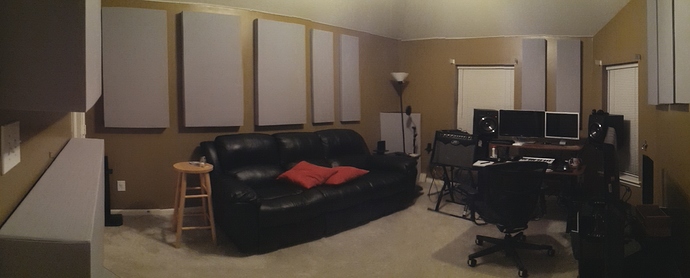It’s hard to make a value judgement about this because it’s art, and it’s hard to do a meaningful scientific test of it because by its very nature analog(ue  ) summing can and will change the decisions you make as a mixer because you react to what you hear and feel - you can’t limit a test to a single variable because that stifles the point of it!
) summing can and will change the decisions you make as a mixer because you react to what you hear and feel - you can’t limit a test to a single variable because that stifles the point of it!
You can describe scientifically what’s going on, of course, and just be happy to accept that to some people it’s a good thing in terms of how a unifying colouration and saturation over however many channels of summing you have affects the end result.
If I can briefly stray into dangerous psychoacoustic waters…
The wonderful world of sound is ENTIRELY a creation of our minds, since sound is just vibrations. We could just as easily have evolved to perceive those vibrations with our sense of touch, but our brains prefer to deal with it by presenting our consciousness with a whole made up sensory experience of pitches, timbres, rhythms etc. In a way, our experience of sound is a form of synesthesia - vibrations felt in our cochleas produce a wonderful extra sensory universe that helps us understand our surroundings etc.
As such, as individuals and as cultures we get to define what “good” sound even means. It’s not like touch where good touch involves lack of pain, or vision where good sight involves not seeing a sabre-tooth tiger leaping out of the darkness to kill you. In sound it’s just a blank canvas. So we define “Good” based on precedent. For example, it’s interesting that we come up with scientific rationales for our use of octaves divided into twelve tones, but we only understand this division and pitch intervals/ scales etc as being music because we hear them as young children and get used to them. In other cultures different non-semitone intervals are used to divide up octaves, so there’s nothing universal about that.
My point is that for the best part of 100 years, our culture has got used to the idea that good records sound like lots of tracks with unifying distortions caused by the way the tracks were recorded, mixed and summed in consoles with channels that share the same characteristics but are not identical, then more distortions caused by the recording and playback mediums. There are no absolutes here - this ends up sounding right because our ears are used to it. A good example of this is guitar distortion. In the beginning, it was undesirable. But our culture got used to it and eventually we’ve learned to embrace it.
Everyone posting on this forum, unless they’re children, can safely be said to have grown up with the sound of analogue summing being pervasive in our culture. Even to someone who just passively enjoys music, the extra harmonic colouration will be picked up by the automatic process of the ear and brain as a clue that all the different parts of the mix belong together - our ears are ALWAYS doing this job and looking for clues for how to group the disparate series of harmonics that hit our eardrums. That’s how we identify the different sources of multiple sounds happening at once.
Then after the best part of a century, digital comes along and it has no colour at all. The mathematics of bit depth and sample rate are sound - for a given frequency and dynamic range, digital reproduces sound perfectly and digital summing is literally A+B+C etc with nothing added and nothing lost.
But as mixers our only benchmark to determine whether a mix is Good or Bad is precedence. And precedence tells us that good finished mixes have unifying harmonic colouration caused by analogue summing, even if that effect is subtle. So we add it one way or another - extra preamp drive on the way in, more colourful mics, vst plugins that replicate analogue distortions, or even new ways to create homogeny across the mix like coloured mastering processes, distortion caused by brick wall limiting or lossy conversion artifacts. However we do it, part of mixing is making the disparate sounds that make up the mix sound like they belong together, and analogue summing is one option.
Oh, Christ on a bike. Another essay. This is what happens when I’m at work and my boss isn’t is the office. 
Edit: I’ve read this through and frankly I’ll be amazed if my train of thought makes sense to anyone. It might be mad ramblings. Ignore if need be.
 ) summing can and will change the decisions you make as a mixer because you react to what you hear and feel - you can’t limit a test to a single variable because that stifles the point of it!
) summing can and will change the decisions you make as a mixer because you react to what you hear and feel - you can’t limit a test to a single variable because that stifles the point of it!

